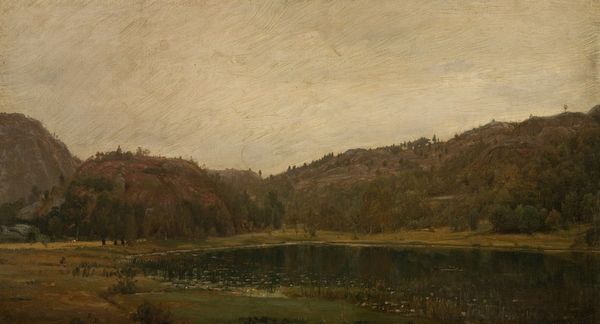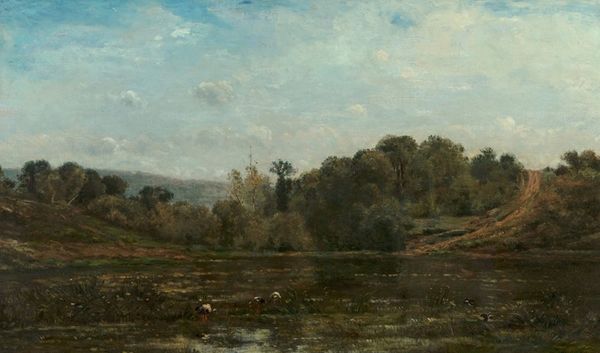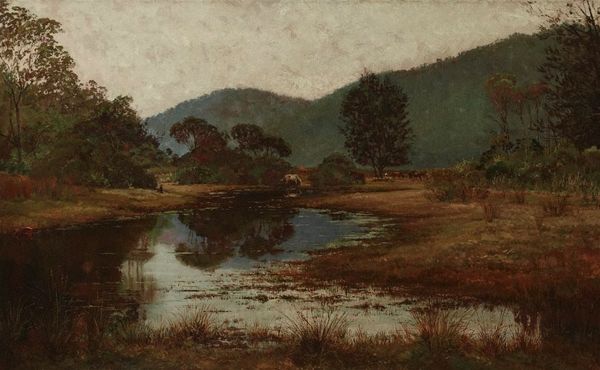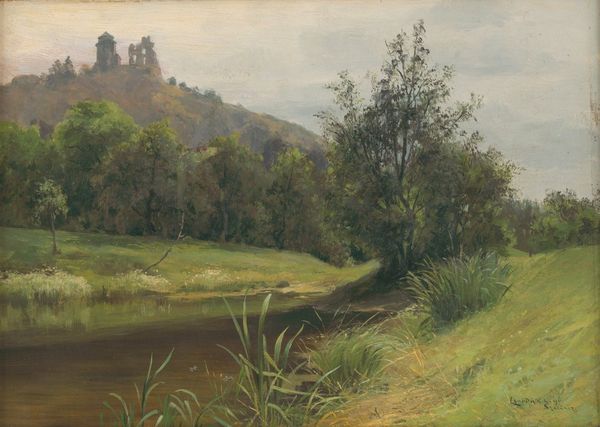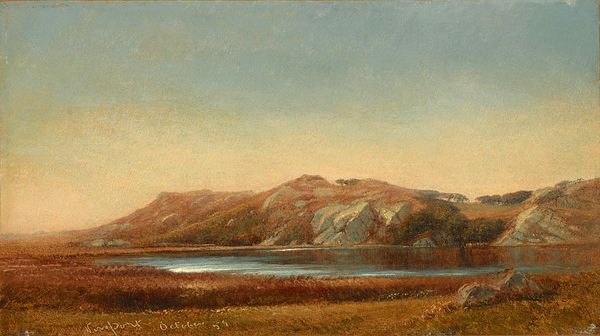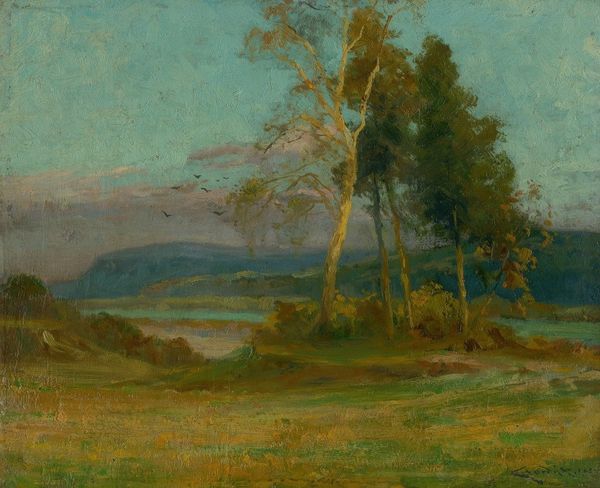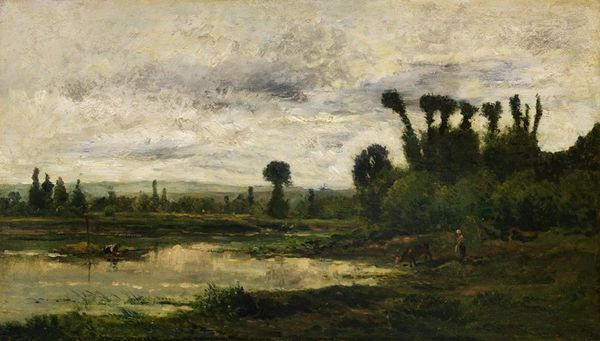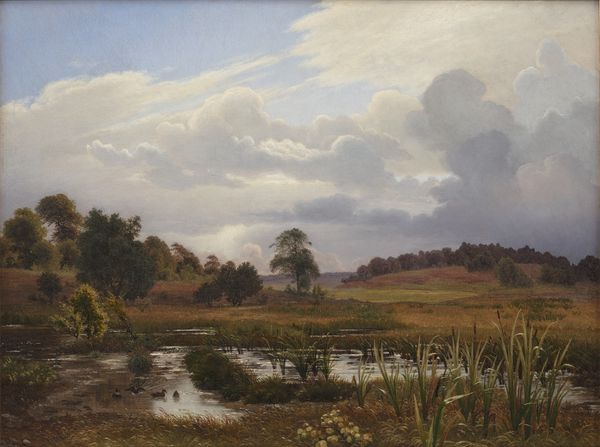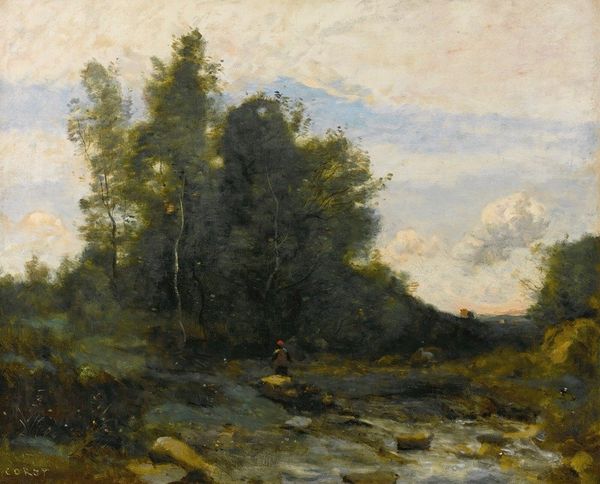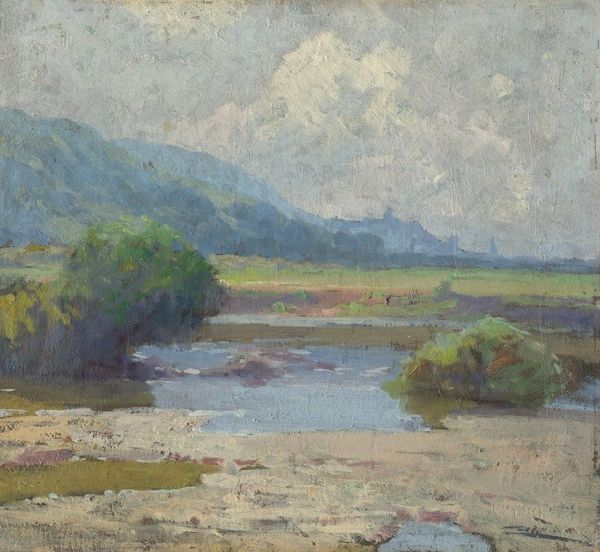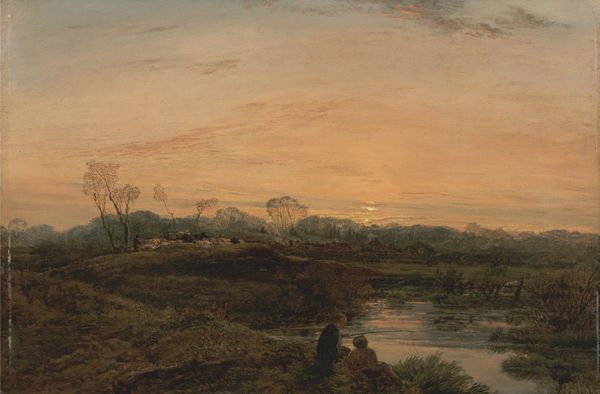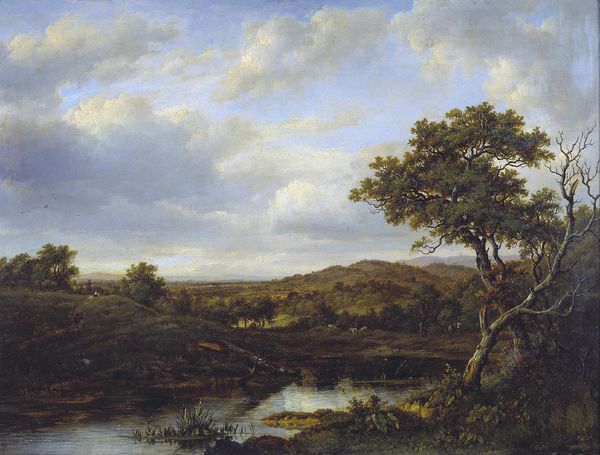
Copyright: Public Domain: Artvee
Curator: This is Amaldus Nielsen’s “Tåkestemning. Hoven, Mandal,” painted around 1900. A beautiful landscape rendered in oil on canvas. Editor: It has this striking melancholic mood, doesn't it? The way the light catches the water feels almost somber, while the land exudes dampness, like everything is softly saturated. Curator: Considering Nielsen's place within Norwegian landscape painting and his exploration of national identity at a crucial period in Norway's history, we can see his landscapes as deliberate constructions shaping cultural perceptions of the region. Editor: Yes, and look closely at how he actually builds the scene. It's so materially driven. The layering of paint creates a depth. You almost feel the humidity rising from the canvas itself, and can practically smell the wet soil of the field. Curator: The location is interesting here. Hoven, in Mandal, offers a study in how artists depicted regional specificity to bolster ideas of nationhood. Nielsen wasn't merely capturing a landscape; he was contributing to the visual language that defined a culture during the rise of national romanticism and, I think, its lingering resonance for viewers now. Editor: The tones! It’s practically monochrome. And even with such a subdued palette, you still discern different textural components--the mountains in the background seem smoother than the brush, but the texture creates an altogether softer atmospheric condition within this particular ecosystem. It feels deeply embodied. Curator: Indeed, the atmospheric conditions contribute significantly to a nuanced understanding. They don’t merely provide aesthetic pleasure, they create a stage upon which questions of belonging and cultural formation take place in relation to a growing interest in the landscape's natural resources. Editor: What strikes me is how accessible these seemingly simple brushstrokes are! The way the land is created isn’t really about perfection or accurate depiction, as much as capturing an immediacy of working on-site and translating feelings from direct experience into art materials. I can definitely feel the labor. Curator: This piece leaves me reflecting on the power of landscape art to engage in cultural narration and societal consciousness through intersectional dimensions like ecology, community, and stewardship in an environment that encourages slow looking and thinking. Editor: For me, I’m most moved by how materiality generates feeling and deepens an appreciation for environmental and emotional relationships formed with landscapes in our world today. It prompts reflection on labor and consumption of resources, asking what it really means to take something from the landscape versus how art makes these things last forever.
Comments
No comments
Be the first to comment and join the conversation on the ultimate creative platform.
